
Gioielli in oro nero: una guida completa
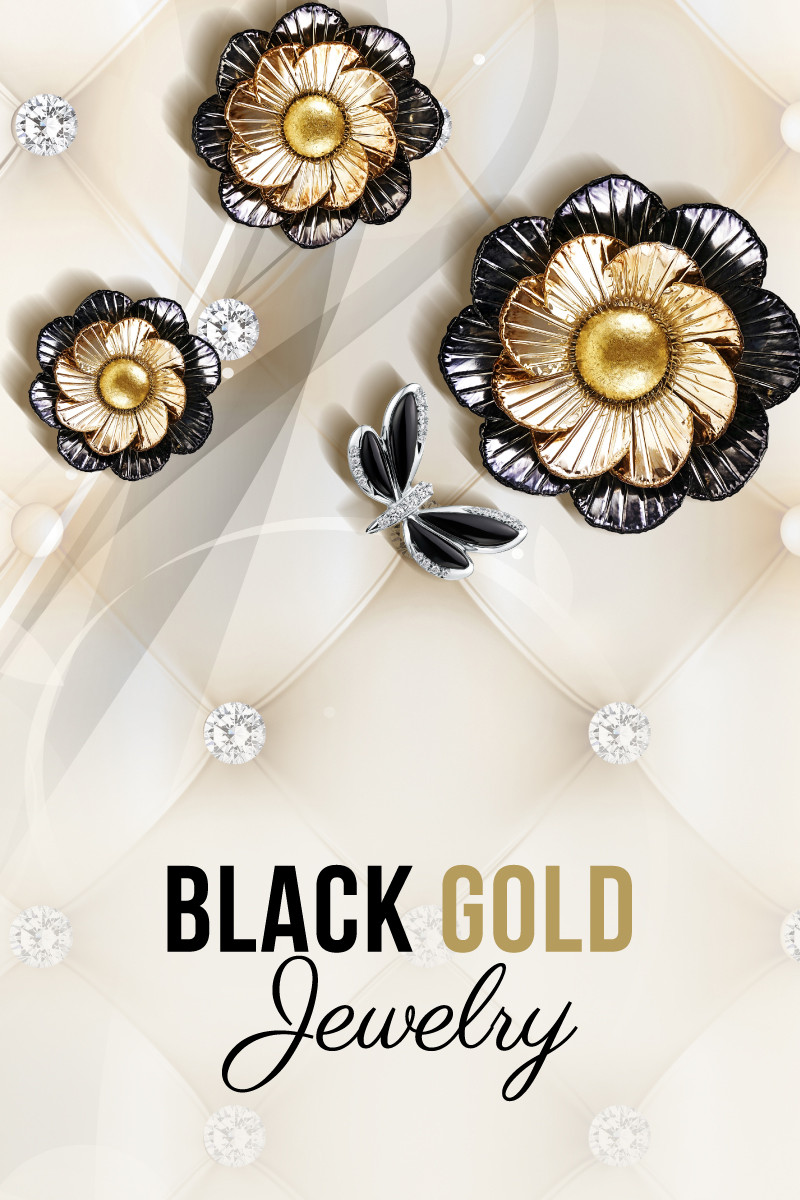 L'oro nero è un tipo di oro annerito artificialmente attraverso varie tecniche. Come l'oro bianco o l'oro rosa, l'oro nero è un'altra opzione per i colori dei gioielli in oro al di fuori del tradizionale giallo.
L'oro nero è un tipo di oro annerito artificialmente attraverso varie tecniche. Come l'oro bianco o l'oro rosa, l'oro nero è un'altra opzione per i colori dei gioielli in oro al di fuori del tradizionale giallo.
Se ami tutto nero, i gioielli in oro nero potrebbero essere la scelta perfetta per te. Questa tonalità dorata porta uno stile audace e non convenzionale, ma anche sofisticato.
L'oro nero è un vero oro? Più o meno. L'oro naturale si trova solo in giallo. Proprio come l'oro bianco o l'oro rosa, l'oro nero non si trova in natura; deve essere alterato per ottenere questo colore. Ma la base d'oro che viene annerita è vero oro.
Oggi vi spiegheremo tutto sui gioielli in oro nero, come si differenziano dagli altri metalli neri, quanto costano e come prendersene cura.
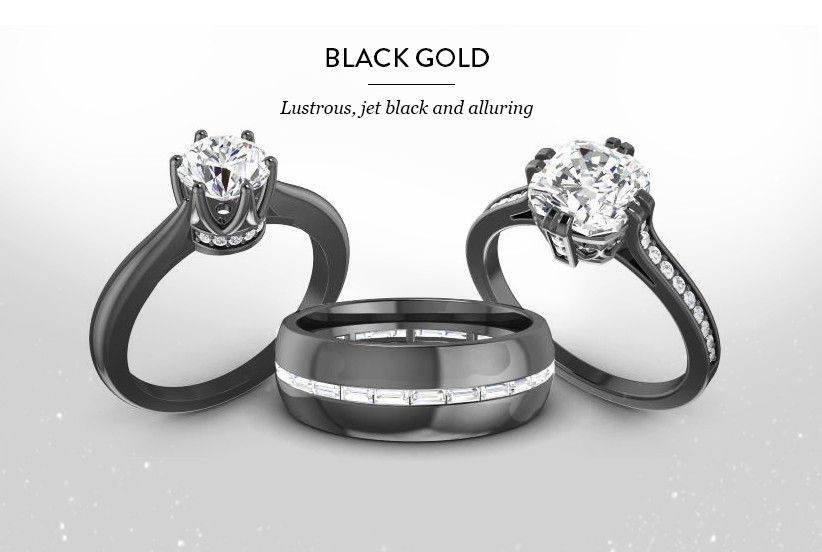
Cos'è l'oro nero?
Sebbene “oro nero” sia un termine comunemente usato per indicare il petrolio o il petrolio stesso, si riferisce anche all’oro colorato.
L'oro non si trova naturalmente con colorazione nera. Infatti, ogni oro al di fuori dell'oro giallo deve essere alterato per assumere un nuovo colore.
Ad esempio, l'oro rosa si crea mescolando oro giallo (la forma naturale) con rame, spesso in una miscela di oro al 75 percento e rame al 25 percento per creare oro rosa 18K . D'altro canto, l'oro bianco può essere creato mescolando oro giallo con metalli come nichel, zinco, palladio o una combinazione di questi.
Quando mescoli l'oro con altri metalli, diventa una lega. I metalli aggiuntivi che scegli di mescolare e la tecnica usata per combinare i metalli determinano il nuovo colore dell'oro.
Di cosa è fatto l'oro nero? Dipende dalla tecnica, che vedremo più avanti.

Come si produce l'oro nero?
Per quanto riguarda le leghe, i gioiellieri possono aggiungere all'oro cobalto, rodio, rutenio o una combinazione di questi per creare l'oro nero.
Esistono diversi metodi per creare l'oro nero. Il metodo più popolare è la galvanizzazione, che tratteremo per prima.
Galvanotecnica
La galvanica è anche chiamata "deposizione elettrochimica", "elettrodeposizione" o semplicemente "placcatura". Sebbene questi termini possano sembrare complessi, questo metodo è piuttosto semplice.
Il processo prevede la preparazione del metallo (in questo caso, l'oro), quindi il suo inserimento in una soluzione. Questa soluzione contiene un nuovo metallo che diventerà un rivestimento sull'oro. Mentre l'oro è nella soluzione, il gioielliere vi fa passare una corrente elettrica, che consente alle molecole del nuovo metallo di legarsi al metallo originale.
Per creare l'oro nero, la soluzione deve contenere rodio nero, nichel o rutenio. Il rodio nero stesso si forma mescolando al rodio varie leghe come rutenio, solfuro di stagno, triossido di arsenico o ossido di tellurio.
Il risultato è un metallo grigio scuro, nero o color polvere da sparo: la tonalità esatta dipende dalle leghe aggiunte al rodio.
Lo svantaggio principale della galvanica è che alla fine sbiadisce. Puoi sempre risolvere il problema facendola riplaccare.
Pittura
Un modo meno comune per annerire l'oro è dipingendo un liquido nero sulla superficie dell'oro. Puoi usare vernice acrilica o altri liquidi simili alla vernice (come una miscela di vernice nera Duco e diluente Duco) per annerire l'oro in questo modo. Una volta asciutto, vorrai sigillare il colore con una vernice sottile, un lucidante o uno spray anti-ossidazione.
Questo tipo di oro nero può scheggiarsi più facilmente e può essere difficile ottenere un colore uniforme su gioielli più elaborati, quindi non è la tecnica preferita per i gioielli in oro nero.
Smalto
Un'altra tecnica per creare l'oro nero è la smaltatura. La smaltatura prevede l'uso di calore molto elevato (solitamente tra 1300 e 1600 °F) per fondere il vetro in polvere in un metallo.
Puoi creare oro nero cuocendo lo smalto su oro giallo. Il risultato finale è un pezzo di oro nero liscio, lucente e duro.
L'oro puro è probabilmente il miglior metallo per la smaltatura, poiché non si ossida. La smaltatura è uno dei metodi più duraturi per creare oro nero (spesso è meno probabile che si ossidi rapidamente come un pezzo elettroplaccato), ma è anche uno dei più costosi.
Ossidazione
È possibile creare l'oro nero anche tramite ossidazione. Questa tecnica prevede l'applicazione di un acido sulla superficie dell'oro, che ne provoca l'ossidazione e l'oscuramento.
Poiché l'oro puro non reagisce con l'ossigeno, l'ossidazione richiede un oro con caratura inferiore a 24 carati, ovvero 22K, 18K , 14K, 12K o 10K.
Tuttavia, l'ossidazione può indebolire i metalli, quindi non è la soluzione ideale.
Applicazione laser
L'ultimo metodo è relativamente nuovo: i trattamenti laser a femtosecondi. Questa tecnica prevede l'uso di un laser per applicare un impulso di energia ad alto volume sull'oro, formando microstrutture che assorbono la luce. Il pezzo risultante appare nero perché assorbe la luce anziché rifletterla.
Le applicazioni laser creano i gioielli in oro nero più durevoli. Tuttavia, sono attualmente piuttosto costosi, quindi non sono così comuni. Potrebbero diventare più comuni e accessibili se la domanda aumenta.
Se sei semplicemente interessato ai gioielli in metallo nero, potresti voler conoscere altre opzioni in metallo nero.
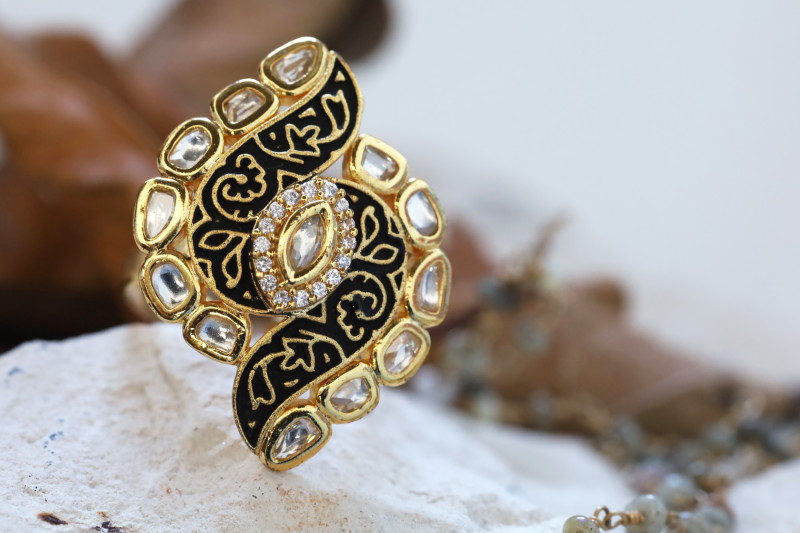
Oro nero contro altri metalli neri
L'oro nero è solo un'opzione per i gioielli in metallo nero. Alcune altre opzioni di gioielli neri sono:
Ceramica nera
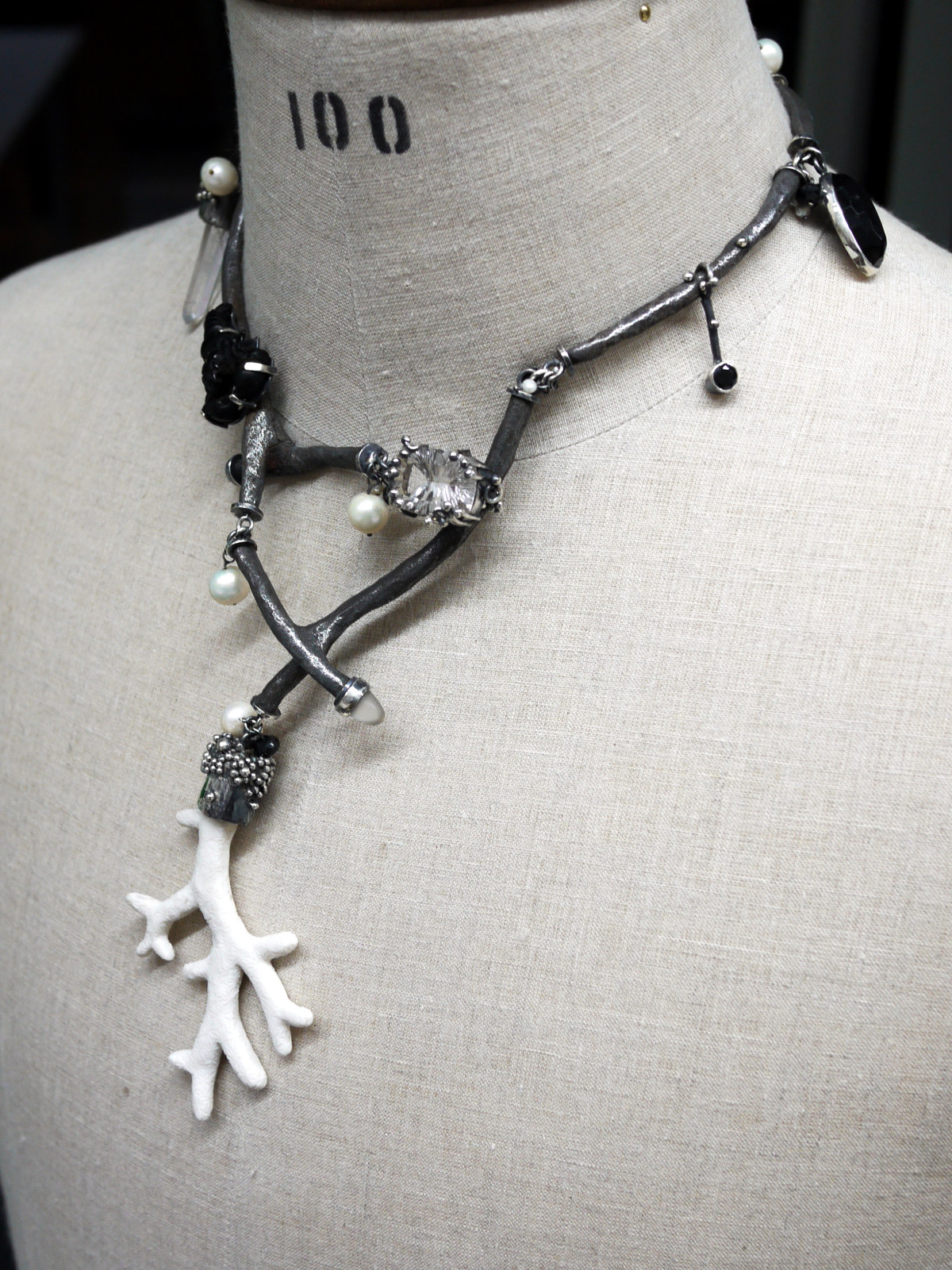 Credito immagine: il peccatore giustificato | Flickr
Credito immagine: il peccatore giustificato | Flickr
La ceramica nera è un materiale usato in modo simile ai metalli nella gioielleria. È molto dura ma leggera e non ha bisogno di un rivestimento per essere nera. Ciò significa che i graffi non riveleranno un altro colore nascosto sotto.
Un vantaggio dei gioielli in ceramica nera è che sono lucidi e convenienti. Tuttavia, sono più fragili e inclini a rompersi se cadono.
Tungsteno nero

Un'altra opzione di metallo nero è il tungsteno. Come l'oro, il tungsteno deve essere trattato per diventare nero. Il processo prevede di sparare al tungsteno piccole particelle di lega di titanio e zirconio nere a velocità molto elevate in modo che le particelle aderiscano al metallo.
I pro del tungsteno nero includono l'elevata resistenza ai graffi, l'ipoallergenicità e l'elevata resistenza all'ossidazione. Tuttavia, i gioielli in tungsteno possono rompersi come i gioielli in ceramica e la loro durevolezza rende difficile ridimensionarli.
Titanio nero
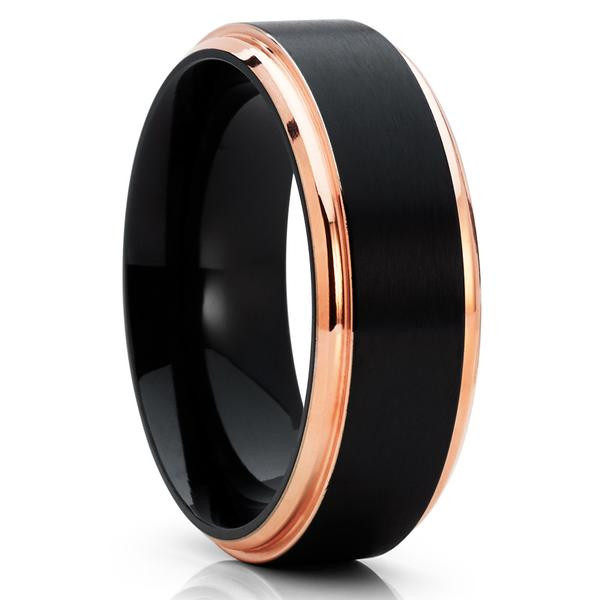
Il titanio è la scelta più popolare per i gioielli in metallo nero.
Come l'oro, il titanio non si trova naturalmente di colore nero. Il titanio nero si crea rivestendo il titanio con un carbonio simile al diamante (DLC). Questo forma uno strato superficiale nero lucido e antigraffio. L'uso del carbonio consente al metallo finito di essere altamente resistente al calore e molto liscio al tatto.
Rispetto ad altri metalli scuri come l'oro nero o l'argento, il titanio nero è spesso più durevole e più conveniente. Il titanio nero è anche ipoallergenico, resistente alla corrosione e chimicamente inerte (il che significa che non reagisce alle sostanze chimiche). Il colore non dovrebbe sbiadire o appannarsi a meno che non venga sottoposto a condizioni estreme.
L'unico inconveniente del titanio è che, come il tungsteno, la durevolezza del metallo rende difficile modificarne le dimensioni.
Fibra di carbonio

La fibra di carbonio, o fibra di grafite, è un polimero utilizzato in modo simile ad altri metalli nella gioielleria. Il materiale è super resistente, 5 volte più resistente dell'acciaio, in effetti! Tuttavia, è anche leggero, 3 volte più leggero del titanio e 12 volte più leggero dell'oro.
Alcuni pro dei gioielli in fibra di carbonio includono la leggerezza, la durevolezza, la resistenza ai graffi, l'ipoallergenicità e la non contaminazione. Inoltre, questo tipo di gioiello nero alla moda è conveniente.
L'unico inconveniente dei gioielli in fibra di carbonio è che non sono sicuri da indossare se si lavora a contatto con l'elettricità, perché sono conduttivi.
Acciaio inossidabile nero
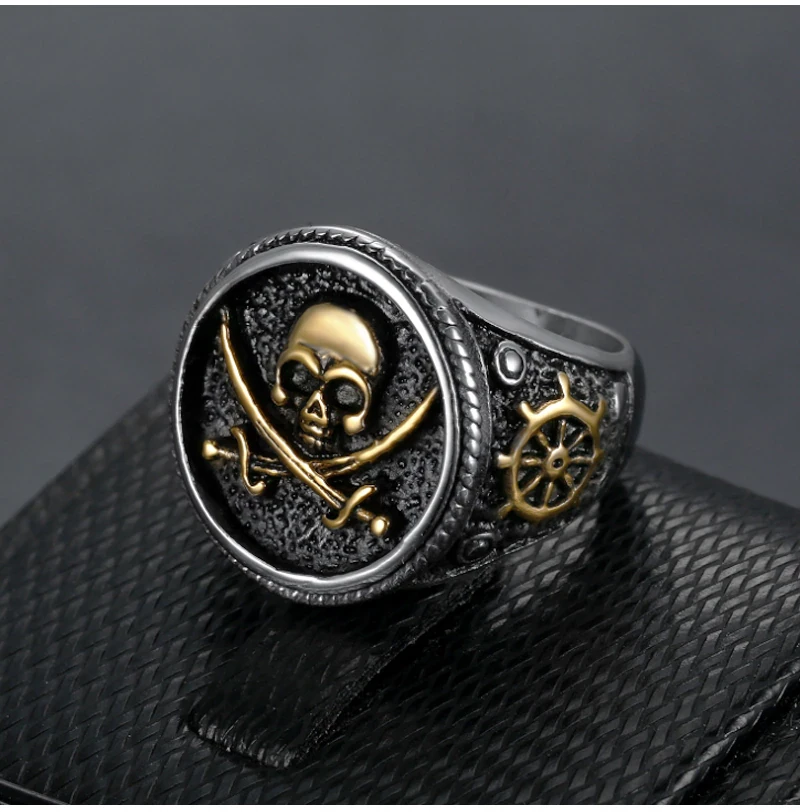
L'acciaio inossidabile non è solo per i frigoriferi: puoi trovare anche gioielli in acciaio inossidabile nero! Esistono due modi per creare acciaio inossidabile nero: rivestimento acrilico e anodizzazione.
Il rivestimento acrilico consiste nel rivestire l'acciaio inossidabile con acrilico nero. Ma questo rivestimento si graffia facilmente, quindi non è l'ideale per i gioielli.
La maggior parte dei gioielli in acciaio inossidabile nero è anodizzata. L'anodizzazione è simile alla galvanica, ma invece di rivestire un metallo diverso sul metallo esistente, crea lo strato di ossido naturale del metallo esistente, creando uno strato superficiale di ossido più spesso.
In questo caso, lo strato di ossido dell'acciaio inossidabile è nero. Da lì, il gioielliere riscalda l'acciaio inossidabile finché non mostra la tonalità e la lucentezza nere ideali.
Tecnicamente, l'acciaio inossidabile non può essere anodizzato, ma l'acciaio inossidabile annerito creato tramite il processo sopra descritto è ancora definito "anodizzato".
Alcuni pro dell'acciaio inossidabile anodizzato sono la sua resistenza alla corrosione e la sua adattabilità all'uso quotidiano. Tuttavia, vorrai aggiungere un rivestimento protettivo per garantirne la durata.
Zirconio
Lo zirconio è l'unico metallo per gioielli che può diventare nero in modo permanente senza processi complessi. Non hai bisogno di rivestimenti; semplicemente riscaldando lo zirconio diventerà nero perché il calore forma uno strato di ossido di zirconio.
Alcuni pro dello zirconio sono che è ipoallergenico, resistente alla corrosione, molto resistente ai graffi, leggero e durevole. Sebbene il tungsteno sia più duro dello zirconio, lo zirconio è meno fragile del tungsteno.
Acciaio di Damasco
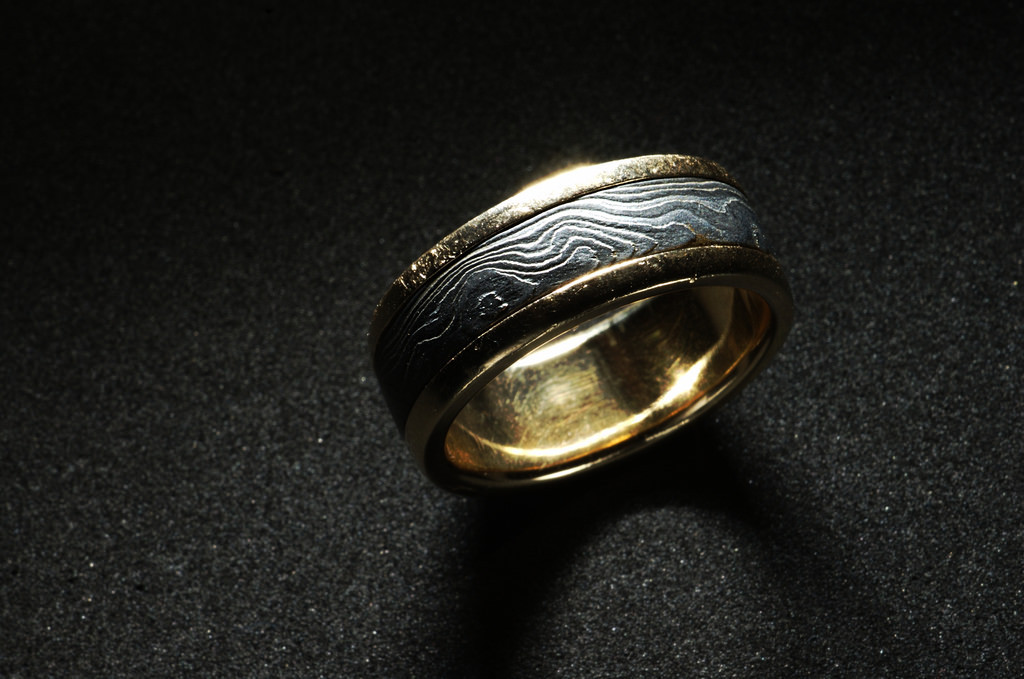
Probabilmente hai sentito parlare delle armi in acciaio di Damasco, ma questo metallo può essere utilizzato anche in gioielleria! L'acciaio di Damasco è creato saldando strati di acciaio e ferro tra cicli di calore e forgiatura. Il risultato è un metallo argentato, grigio o nero con un motivo ondulato, spesso alternando toni più chiari e più scuri.
Oltre al suo aspetto unico, l'acciaio di Damasco è altamente resistente ai graffi, alla corrosione e al degrado. Il metallo è duro e flessibile, il che lo rende perfetto per gioielli ornati.
L'unico inconveniente dell'acciaio di Damasco è che non è un metallo nero puro, ma presenta delle venature che spesso virano all'argento.
Rispetto a tutti i metalli neri sopra elencati, l'oro nero è semplicemente più prezioso, anche se il suo valore può dipendere da alcuni fattori.

Valore dell'oro nero
Innanzitutto, l'oro nero è più costoso dell'oro? Tecnicamente no, ma dipende. Il valore dell'oro nero dipende dalla purezza (ovvero dalla caratura) dell'oro sottostante.
Esiste un oro nero 14K? Sì, puoi trovare oro nero in qualsiasi caratura tranne 24K, poiché l'oro 24K è oro al 100% e gli ori colorati sono intrinsecamente impuri. Consigliamo oro 14K o superiore per il miglior valore.
Per quanto riguarda il carato, i prezzi dell'oro nero dipenderanno principalmente dal carato dell'oro. Ciò significa che l'oro nero 18K sarà più prezioso dell'oro nero 14K. Anche il processo utilizzato per rendere nero l'oro potrebbe avere un ruolo: l'oro nero elettroplaccato sarà più prezioso dell'oro nero ossidato o verniciato, mentre l'oro nero smaltato o applicato al laser potrebbe essere più prezioso dell'oro nero elettroplaccato.
Hai dei gioielli in oro che vuoi trasformare in gioielli in oro nero? I prezzi per la rodiatura dei gioielli in oro nero sono solitamente compresi tra $ 75 e $ 120.
Quando si acquistano gioielli in oro nero, bisogna aspettarsi di pagare un extra per le pietre preziose aggiunte o altri abbellimenti.
A seconda della caratura, i gioielli in oro nero potrebbero essere un investimento. Quindi, quanto dura la placcatura in oro nero? E come si fa a evitare che si annerisca?
Prendersi cura dell'oro nero
La placcatura in oro nero dura solitamente dai 6 mesi ai 2 anni, a seconda di quanto è stato placcato l'articolo e di quanto spesso lo si indossa.
L'oro nero si ossida? L'oro nero non è oro puro, quindi può ossidarsi nel tempo a causa del contatto con umidità, aria, oli e altre sostanze. Puoi aiutare a prevenire l'ossidazione dell'oro nero tenendolo asciutto, conservandolo in un contenitore ermetico e utilizzando uno spray protettivo per gioielli.
L'oro nero sbiadisce? L'oro nero elettroplaccato alla fine inizierà a consumarsi, quindi lo sbiadimento è inevitabile. Quando vedi l'oro giallo spuntare, è meglio farlo riplaccare per ripristinare il colore nero e la lucentezza brillante.
Oltre a evitare graffi e urti, puoi anche garantire che i tuoi gioielli in oro nero durino più a lungo pulendoli regolarmente.
Come si pulisce l'oro nero?
In generale, è meglio pulire delicatamente qualsiasi gioiello d'oro una volta alla settimana. Ecco i passaggi per pulire in modo sicuro i gioielli in oro nero:
Riempi una ciotola con acqua calda e aggiungi un sapone delicato (come il detersivo per i piatti Dawn).
Immergi una spazzola morbida (come uno spazzolino da denti) o un panno nell'acqua saponata, quindi pulisci delicatamente i gioielli in oro nero.
Risciacquare eventuali residui di sapone.
Asciugare accuratamente il gioiello in oro nero con un panno morbido in microfibra.
Ecco altri suggerimenti per garantire che i tuoi gioielli in oro nero durino il più a lungo possibile:
Non indossare un altro anello accanto al tuo anello in oro nero, perché potrebbe graffiarlo.
Toglietevi i gioielli in oro nero prima di fare il bagno, di svolgere attività faticose che potrebbero farvi sudare o di svolgere faccende domestiche come lavare i piatti.
Applica eventuali profumi, lozioni o altri prodotti di bellezza (e lascia asciugare) prima di indossare i tuoi gioielli in oro nero.
Tenere i gioielli in oro nero galvanizzato lontano da cloro e acidi, poiché potrebbero danneggiarne la placcatura.
Segui questi passaggi e i tuoi gioielli in oro nero brilleranno per anni!
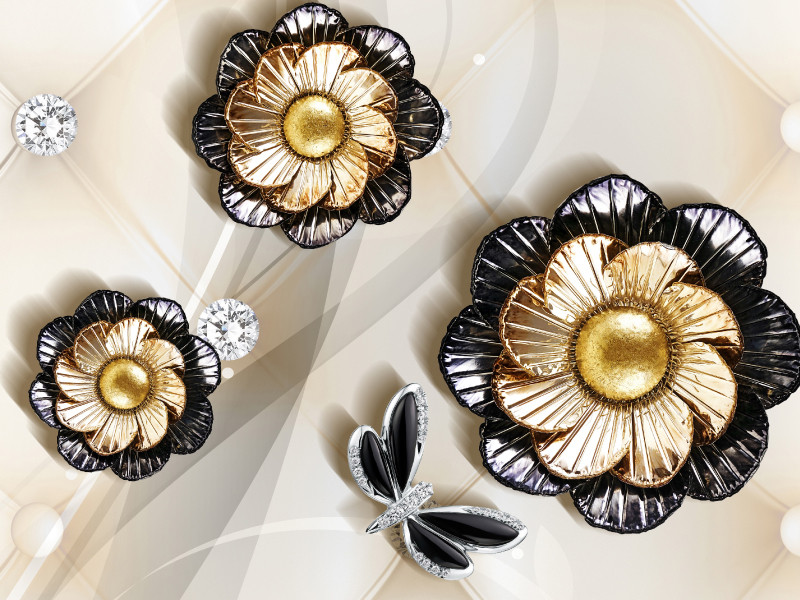
Vuoi dipingere i tuoi gioielli di nero?
Se vedi l'oro giallo e vuoi dipingerlo di nero, i gioielli in oro nero sono la scelta giusta per te. L'aspetto unico e audace del metallo offre un'estetica non convenzionale ma raffinata che si abbina perfettamente a quasi tutti i look.
Pronti per lo shopping? Esplora la nostra collezione di gioielli in oro nero!
Cerca il Fashion Encyclopedia
Aste correlate
articoli Correlati
Come acquistare gioielli su Internet. Ci sono così tanti tipi di perline. Starà a te decidere da dove vuoi iniziare, tutte le perline di pietre preziose autentiche o se utilizzerai anche perline di vetro "artificiali" e perline d'oro e d'argento.
10th Apr 2019
Come acquistare un rubino per il tuo anello o pendente,Assicurati di imparare il più possibile sui rubini, prima di acquistare un anello o una montatura a cui aggiungerai rubini. Come i diamanti, i rubini possono essere imperfetti e difettosi. Il rubino è uno dei più b
10th Apr 2019
Perché ho scelto questo anello di fidanzamento?
10th Apr 2019
Articoli Recenti
Il titanio è un metallo popolare per la gioielleria, noto per essere leggero, durevole e conveniente. Scopri tutto sul titanio, come si confronta con metalli simili e i pro e i contro dei gioielli in titanio.
7th Feb 2023
Scopri tutto sui gioielli in tungsteno, dalla sua storia e i suoi usi alla sua durata e cura. Alla fine della nostra guida, saprai se il tungsteno è giusto per te!
7th Feb 2023
Stai pensando di aggiungere qualche intramontabile gioiello in oro bianco alla tua raffinata collezione di accessori? Ecco tutto quello che c'è da sapere sul sofisticato oro bianco!
29th Jan 2023




